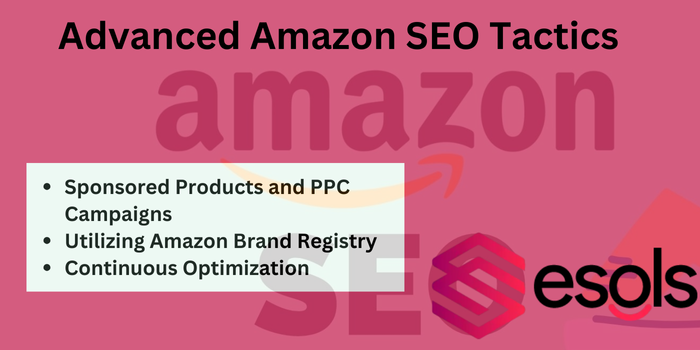In the competitive landscape of e-commerce, visibility is paramount. For sellers on Amazon, leveraging effective SEO (Search Engine Optimization) strategies can mean the difference between a thriving business and one that struggles to gain traction. This guide will walk you through the mastering of Amazon SEO, ensuring your products reach the right audience and achieve maximum sales potential.
Table of contents
Understanding Amazon’s A9 Algorithm
Amazon’s search algorithm, known as A9 Algorithm , differs significantly from traditional search engines like Google. A9 prioritizes purchasing intent, focusing on how likely a product is to sell when displayed. Key factors influencing Amazon’s search rankings include:

- Relevance: How well your product matches the search query.
- Performance: Historical sales data and conversion rates.
- Customer Satisfaction: Reviews and ratings.
Key Components of Amazon SEO
Keyword Research
Effective keyword research is the foundation of Amazon SEO. Utilize tools such as Amazon’s own search bar, where auto-suggestions can provide insight into popular search terms. Other tools like Helium 10, Jungle Scout, and MerchantWords offer comprehensive keyword data and trends.
- Foundation of Amazon SEO: Effective keyword research is the foundation of Amazon SEO, ensuring products are discoverable by potential buyers through targeted search terms and phrases.
- Amazon’s Search Bar Insights: Utilize Amazon’s search bar for auto-suggestions, providing real-time insight into popular search terms directly from the platform’s extensive user base.
- Helium 10: Tools like Helium 10 offer comprehensive keyword data, allowing sellers to analyze trends, search volumes, and competitive insights to optimize product listings.
- Jungle Scout: Jungle Scout provides valuable keyword research capabilities, helping sellers identify high-performing search terms and stay ahead of market trends for better product visibility.
- MerchantWords: MerchantWords offers extensive keyword data and insights, enabling sellers to refine their product listings with precise, high-performing search terms tailored to their target audience.
Product Title Optimization
Your product title should be clear, concise, and keyword-rich. A well-optimized title typically includes:
- Primary keyword: The primary keyword is the main search term that potential buyers will use to find your product. Including it in the title helps improve search engine rankings and visibility.
- Brand name: Including the brand name in the title establishes brand recognition and trust. It helps customers identify products from their preferred brands quickly.
- Key features (size, color, quantity): Highlighting key features like size, color, and quantity provides essential product details at a glance. This information helps customers make informed purchasing decisions.
- Product type: Clearly stating the product type in the title ensures customers know exactly what you’re selling. This clarity reduces confusion and improves the likelihood of attracting the right audience.
Bullet Points and Description
Use bullet points to highlight key features and benefits of your product. Ensure they are keyword-optimized but avoid keyword stuffing. The product description allows for more detailed information and can further reinforce keywords naturally.
Backend Search Terms
Amazon provides a backend section for additional keywords that do not appear on the product listing. These should include variations, synonyms, and related terms. Utilize all available character space to maximize visibility.
Pricing Strategy
Competitive pricing can improve your product’s visibility. Tools like CamelCamelCamel help track price trends, enabling you to adjust your prices strategically.
| Key Point | Explanation |
| Market Analysis | Understanding your competitors’ pricing is crucial. It helps identify market trends and pricing gaps. Tools like CamelCamelCamel can provide historical data and price fluctuations. |
| Price Matching | Aligning your prices with competitors can attract price-sensitive customers. Regularly monitor competitors to stay competitive. Use tools to automate price adjustments in real-time. |
| Dynamic Pricing | Adjust prices based on demand, competition, and market conditions. Dynamic pricing tools can optimize revenue and sales volume. Regular updates ensure prices remain competitive and relevant. |
| Value-Based Pricing | Set prices based on perceived value to the customer. Highlight unique selling points to justify higher prices. This approach can enhance brand perception and customer loyalty. |
| Discount Strategies | Implement strategic discounts during key sales periods. Monitor competitors’ discount patterns to stay competitive. Use tools to ensure discounts are profitable and effective. |
Advanced Amazon SEO Tactics

Sponsored Products and PPC Campaigns
Investing in Amazon’s PPC advertising can significantly increase your product’s visibility, especially for new listings. By using targeted campaigns, you can reach a specific audience, improving your sales velocity. PPC ads appear in prominent places, like search results and product pages, making it easier for potential customers to discover your products.
Utilizing Amazon Brand Registry
Enrolling in Amazon’s Brand Registry provides access to advanced marketing tools like A+ Content and Sponsored Brands. These tools allow you to enhance your product listings with rich media content, such as high-quality images and videos. This not only improves your product’s appeal but also boosts brand visibility, helping you stand out in a crowded marketplace.
Continuous Optimization
Regularly monitoring your product performance and adjusting your SEO strategies is crucial for maintaining and improving your sales. Utilize tools like Amazon Seller Central’s analytics to track key metrics such as keyword rankings, sales, and conversion rates. This data-driven approach enables you to refine your strategies, ensuring that your products remain competitive and visible to potential customers.
Conclusion
Mastering Amazon SEO is a dynamic process that requires continuous effort and adaptation. By understanding and implementing the core principles and advanced tactics outlined in this guide, you can enhance your product listings, improve visibility, and drive sales on Amazon.
Read More : Seo Reporting tool
FAQs
Use Amazon’s search bar for auto-suggestions, and tools like Helium 10, Jungle Scout, and Merchant Words for comprehensive keyword data and trends.
Regular updates are essential. Monitor performance metrics and adjust keywords, descriptions, and prices as needed to stay competitive.
It’s best to tailor keywords to each product. While some overlap is natural, each product should have specific keywords relevant to its features and benefits.
Customer reviews significantly impact SEO. High ratings and positive feedback improve your product’s ranking and attractiveness to buyers.

Smith
Welcome to my blog! As an Digital Marketing expert with over 15 years of experience, I’ve witnessed the transformative power of search engine optimization from the very beginning of my career. In this blog series, I’ll delve into the crucial role SEO , marketing plays in the success of small businesses. Join me on this journey to uncover how leveraging data-driven insights and innovative SEO techniques can propel your small business to new heights, attract a broader audience, and drive sustainable growth in the digital age. Whether you’re a seasoned entrepreneur or just starting out, you’ll find valuable insights and practical tips to enhance your Digital Marketing strategies.


